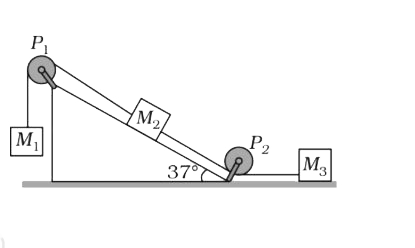In the balanced equation -
[Zn+H++NO−3→NH+4+Zn+2+H2O]
coefficient of NH+4 is :-
4
3
2
1
The correct Answer is:D
To find the coefficient of NH+4 in the balanced equation:
Zn+H++NO−3→NH+4+Zn2++H2O
we need to balance the equation step by step.
Step 1: Write down the unbalanced equation
The unbalanced equation is:
Zn+H++NO−3→NH+4+Zn2++H2O
Step 2: Balance the zinc (Zn) atoms
On the left side, there is 1 zinc atom from Zn and on the right side, there is also 1 zinc atom from Zn2+. Thus, zinc is balanced.
Step 3: Balance the nitrogen (N) atoms
On the left side, there is 1 nitrogen atom from NO−3 and on the right side, there is 1 nitrogen atom from NH+4. Thus, nitrogen is balanced.
Step 4: Balance the hydrogen (H) atoms
On the left side, we have 1 H+ ion, and on the right side, we have 4 H from NH+4 and 2 H from H2O (totaling 6 H). To balance the hydrogen atoms, we need to adjust the number of H+ ions on the left side.
To balance, we will multiply H+ by 6:
6H+
Step 5: Balance the oxygen (O) atoms
Now, we have 3 oxygen atoms from NO−3 on the left side and 1 oxygen atom from H2O on the right side. To balance the oxygen atoms, we will multiply H2O by 3:
3H2O
Now, we have:
- Left side: 3 oxygen from NO−3
- Right side: 3 oxygen from 3H2O
Step 6: Write the balanced equation
Now, the balanced equation is:
Zn+6H++NO−3→NH+4+Zn2++3H2O
Step 7: Identify the coefficient of NH+4
In the balanced equation, the coefficient of NH+4 is 1.
Final Answer
The coefficient of NH+4 is 1.
---
The unbalanced equation is:
Zn+H++NO−3→NH+4+Zn2++H2O
On the left side, there is 1 zinc atom from Zn and on the right side, there is also 1 zinc atom from Zn2+. Thus, zinc is balanced.
On the left side, there is 1 nitrogen atom from NO−3 and on the right side, there is 1 nitrogen atom from NH+4. Thus, nitrogen is balanced.
On the left side, we have 1 H+ ion, and on the right side, we have 4 H from NH+4 and 2 H from H2O (totaling 6 H). To balance the hydrogen atoms, we need to adjust the number of H+ ions on the left side.
6H+
Now, we have 3 oxygen atoms from NO−3 on the left side and 1 oxygen atom from H2O on the right side. To balance the oxygen atoms, we will multiply H2O by 3:
3H2O
- Left side: 3 oxygen from NO−3
- Right side: 3 oxygen from 3H2O
Now, the balanced equation is:
Zn+6H++NO−3→NH+4+Zn2++3H2O
In the balanced equation, the coefficient of NH+4 is 1.
The coefficient of NH+4 is 1.
Topper's Solved these Questions
- REDOX REACTIONSBOOK - ALLENCHAPTER - REDOX REACTIONSEXERCISE - EXERICSE - 3
30 Videos
- REDOX REACTIONSBOOK - ALLENCHAPTER - REDOX REACTIONSEXERCISE - EXERICSE - 4
27 Videos
- REDOX REACTIONSBOOK - ALLENCHAPTER - REDOX REACTIONSEXERCISE - Exercise - 1
61 Videos
- Redox Reaction BOOK - ALLENCHAPTER - Redox Reaction EXERCISE - All Questions
19 Videos
- s-Block element BOOK - ALLENCHAPTER - s-Block element EXERCISE - All Questions
14 Videos
Similar Questions
Write balanced equations for:B2H6+NH3→
View SolutionFor the redox reaction
Zn+NO−3→Zn2++NH−4 is basic medium, coefficients of Zn,NO−3andOH− in the balanced equation respectively are :
View SolutionCopper (Cu) and (Zn) react differently with HNO3 as follows:
Cu+4H⊕(aq)+2NOɵ3(aq)→2NO2(g)Cu2++2H2O
4Zn+10H⊕(aq)+2NOɵ3(aq)→NH⊕4+4Zn2++3H2O
What volume of NO2 gas at 27∘C and 1.0 atm pressure would be produced? if given 2 M HNO3 react with 10 g of a brass ( 90 % Cu 10% Zn) according to the above equation.
View SolutionMasses M1,M2 and M3 are connected by strings of negligible mass which pass over massless and frictionless pulleys P1 and P2 as shown in the figure. The masses move such that the portion of the string betweenP1 and P2 is parallel to the inclined plane and the portion of the string between P2 and M3 is horizontal. The masses M2 and M3 are 4.0 kg each and the coefficient of kinetic friction between both the masses and the surfaces is 0.25. The inclined plane makes an angle of 37° with the horizontal. If the mass M1 moves downwards with a uniform velocity, find
(i) the mass of M1 in kg
(ii) the tension in the horizontal portion of the string in Newton

View SolutionIn the following reaction:
xKMnO4+yNH3→KNO3+MnO2+KOH+H2O
x and y are
View SolutionBalance the following equations.
NO−3+H2S→HSO−4+NH+4
View Solution2 g of brass containing Cu and Zn only reacts with 3M HNO3 solution. Following are the reactions taking place Cu(s)+HNO3(aq)→Cu2+(aq)+NO2(g)+H2O(I)
Zn(s)+H+(aq)+NO−3(aq)→NH+4+Zn2+(aq)+H2O(l)
The liberated NO2(g) was found to be 1.04 L at 25∘C and 1 atm [Cu=63.5,Zn=65.4]
How many grams of NH4NO3 will be obtained in the above reaction ?
View SolutionCopper (Cu) and (Zn) react differently with HNO3 as follows:
Cu+4H⊕(aq)+2NOɵ3(aq)→2NO2(g)Cu2++2H2O
4Zn+10H⊕(aq)+2NOɵ3(aq)→NH⊕4+4Zn2++3H2O
What volume of 2.0MHNO3 would react with 10.0g of a brass (90.%Cu,10.0%Zn) according to the above equation?
View SolutionBalance the following reactions: NH3+O2→NO+H2O
View Solution2 g of brass containing Cu and Zn only reacts with 3M HNO3 solution. Following are the reactions taking place Cu(s)+HNO3(aq)→Cu2+(aq)+NO2(g)+H2O(I)
Zn(s)+H+(aq)+NO−3(aq)→NH+4+Zn2+(aq)+H2O(l)
The liberated NO2(g) was found to be 1.04 L at 25∘C and 1 atm [Cu=63.5,Zn=65.4]
The percentage by mass of Cu in brass was
View Solution
